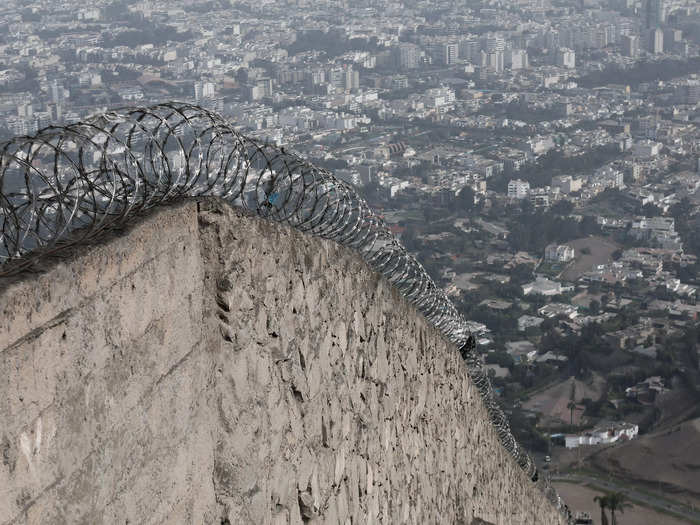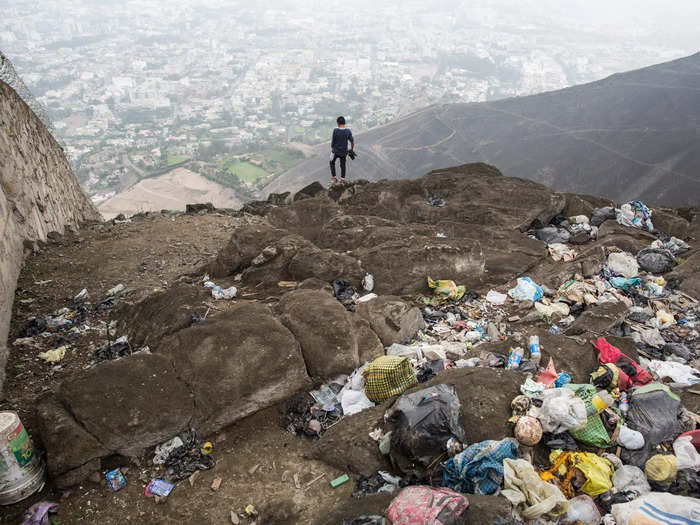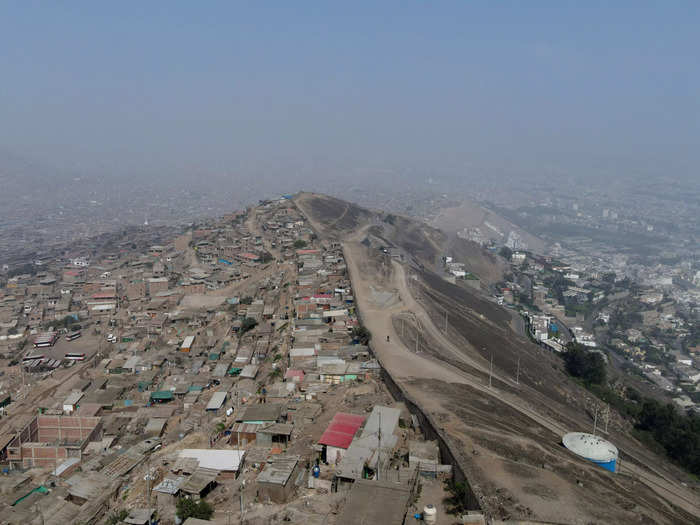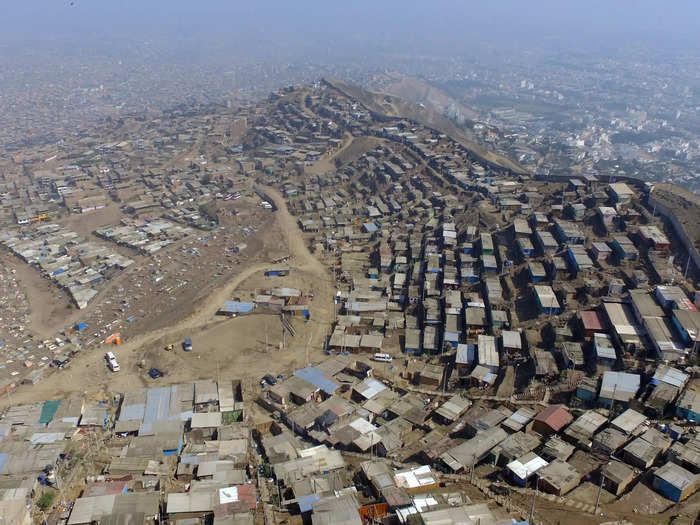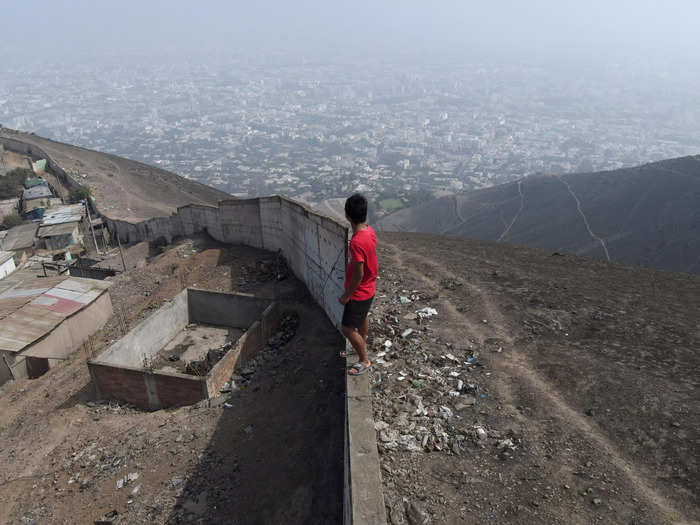Children walk alongside the 10-foot tall "wall of shame" in Lima, Peru.Sebastian Castaneda and Klebher Vasquez, via Getty Images
- A 10-foot tall "wall of shame" separates some of Lima's wealthiest neighborhoods from its most impoverished.
- Now, a nearly three-mile section of the wall is coming down at the end of a four-year court battle.
In Peru's capital city of Lima, a nearly ten-foot tall "wall of shame" has separated the wealthy from the impoverished for four decades.
This year, one segment of this barb-wired wall is being demolished after a long court battle.
"It affects free transit, but also hurts the dignity of the neighbors, it is a division that separates two social groups that should not exist," Gustavo Gutierrez, a court magistrate, told Reuters in a report published Saturday.
Here are five photos that show the wall dividing some of the poorest and richest in Lima.
The "wall of shame" first came up in the 1980s over security concerns.
A view of the "wall of shame" that separates the most exclusive and prosperous areas in the district of Santiago de Surco from an economically disadvantaged zone in the district of San Juan de Miraflores in Lima, Peru. Klebher Vasquez/Anadolu Agency via Getty Images
Now, a section of the wall is being demolished.
A boy walks along one side of the 10-foot tall barb-wired "wall of shame." Sebastian Castaneda/Anadolu Agency/Getty Images
The demolishing of one nearly three mile long segment of the wall began this year, following the conclusion of a four-year court battle.
This segment stands as a barrier between Lima's wealthy La Molina and the poorer Villa Maria del Triunfo neighborhoods.
"This is an inadmissible wall in a democracy," magistrate Gutierrez told french media outlet Le Monde in March. Gutierrez was a member of Peru's Constitutional Court, which ruled in favor of tearing the wall down.
There is a stark divide between the wealthy estates on one side and the slums on the other.
An aerial view of the "wall of shame." Klebher Vasquez/Anadolu Agency via Getty Images
Another section of the wall divides the upper class district of Santiago de Surco from the poorer district of San Juan de Miraflores in Lima.
Property values reached up to $5 million in Santiago de Surco, while San Juan de Miraflores on the other side struggles with basic services.
The wall is not just a physical symbol of inequality, it also impedes access to better-paying jobs.
Aerial view of Lima taken over the wall which separates the Pamplona slum from the middle- and upper-class district of Santiago de Surco. Juan Zacarias/picture alliance via Getty Images
What would have once been a 15-minute journey from the impoverished side to the wealthier neighborhood of Casuarinas has become a two-hour walk, one resident told german media outlet Deutsche Welle in 2017.
Since its construction, the wall has become an immense obstacle for those living on the impoverished communities on one side trying to cross over to affluent neighborhoods in search of better-paying jobs.
Just under a third, or 30.1% of Peru lived beneath the poverty line in 2022, according to an analysis by the World Bank published in April. In 2022, Peru ranked 95th in the world by GDP per capita, at $15,048.
The country also recorded one of the highest levels income inequality in the world, according to data from the World Bank.
Despite a section of the wall coming down, attempts to bridge the gap between both sides are already facing resistance.
An aerial view of a boy standing on ten-foot tall "wall of shame." Klebher Vasquez/Anadolu Agency via Getty Images
Francisco Dumler, the municipal manager of wealthy La Molina, told Reuters that his neighborhood would comply with the court's ruling to demolish the wall.
However, he added that "it must also be made clear that there is no possibility of building paths or any kind of vehicle access to allow crossings directly into La Molina from Villa Maria del Triunfo."
Peru's 'wall of shame' is just one of many barriers dividing the rich and poor across the globe.

